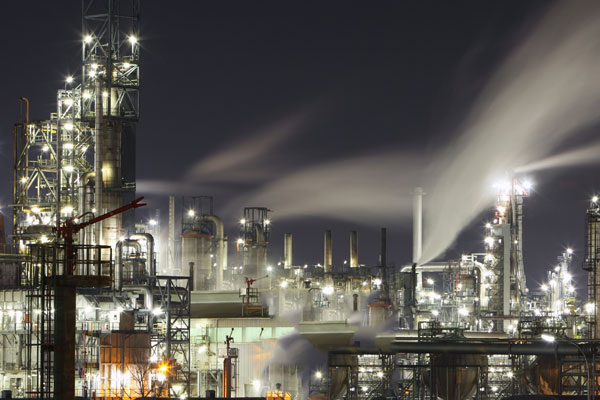Top 5 Insulation Materials for Thermal Insulation Products
What Does Thermal Insulation Mean?
Thermal insulation is the technique of preventing heat from being transferred between materials when they come in contact. Thermal conductivity is used to assess thermal insulation. The use of low thermal-conductive materials achieves thermal insulation. Aside from thermal conductivity, density and heat capacity are key features of insulating materials.
Corrosion under insulation is common in the petrochemical industry and other sectors where pipelines and equipment are heat-insulated. Corrosion often happens on the insulating materials that lie beneath pipelines or equipment. It also affects the insulation of jacket fabrics.
Thermal Insulation process
Thermal insulation is the technique of preventing heat from passing from one surface to another. Thermal insulation requires especially specialized procedures or processes and appropriate item forms and materials. Thermal insulation materials, known as insulators, are put in commercial buildings to reduce the energy consumption of the buildings’ cooling and heating systems. They are also used in industrial systems to manage heat gain or loss on process pipes and equipment, steam and condensate distribution systems, boilers, and other process equipment.
The heat flow through the insulating material must be prevented for thermal insulation. As a result, the insulating material functioning as an insulator should prevent heat from flowing between adjacent surfaces of contacting objects via any heat transfer mechanism. Corrosion of steel in the petrochemical industry is caused by pipes and other equipment thermal insulation. It is deemed severe since it finally leads to plant failure and accidents. Corrosion behind thermal insulation is dangerous because it remains hidden beneath the jacket until it aggravates and shuts down the facility.
Under thermal insulation, two typical forms of corrosion occur: carbon steel rusting (oxidation) and chloride stress-corrosion cracking. This corrosion is caused by the presence of water or moisture and the chloride ion. This corrosion can be controlled by utilizing a suitably designed and fitted jacket, a high-quality vapor retarder, and excellent painting where necessary.
Many different industrial insulating materials are available, much too numerous to explore in-depth here. We’ll go through a handful of the most prevalent industrial insulations and kinds. The following are examples of these:
- Calcium Silicate
- Cellular Glass
- Fibrous materials
- (fiberglass and mineral wool)
- Perlite
- Polyisocyanurate foam
The National Insulation Association’s National Insulation Training Program’s “Insulation Material Specification Guide,” which may be acquired by contacting NIA (www.insulation.org), provides a rapid comparison of ASTM values for this and other insulation materials.
When evaluating material attributes, remember that ASTM test procedures are often done in a laboratory and may not correctly represent field settings depending on process temperatures, environment, and operating circumstances.
Calcium Silicate
Calcium silicate insulation is a hard, stiff substance that can withstand temperatures up to 1,200 degrees Fahrenheit. For high-temperature applications, this has long been the industry standard. It is non-combustible and has high compressive strength.
Cellular Glass
Cellular glass insulation is a strong, thick substance often utilized at minus 450 to 400 degrees Fahrenheit. It has a closed-cell structure, making it ideal for low-temperature applications and applications where fluid absorption into the insulation is a concern.
Fibrous Materials (Fiberglass and Mineral Wool)
Fiberglass and mineral wool insulation are two different forms of insulation. Many of their uses and physical qualities, however, are similar. In most cases, these goods are not employed in environments where mechanical or physical abuse may occur. However, it’s also important to note that some of their physical and acoustic features may be compromised while being utilized at high temperatures.
Perlite
Calcium silicate insulation and perlite insulation are commonly employed in the same applications. It is, however, less dense and has a lower compressive strength than calcium silicate. In addition, it’s been coated with a water inhibitor to keep it from gathering moisture from the air during storage and installation.
Polyisocyanurate Foam
Polyisocyanurate foam insulation is employed in 200 to 300 degrees Fahrenheit temperatures. It has excellent thermal characteristics and is 90% cell-to-cell. However, it needs additional layering in cold service applications because of its contraction properties.
Accessory Materials
The insulation accessory materials are just as significant as the insulation material itself. Therefore, the system will not work as expected if the incorrect accessory material is selected.
Acrylic latex mastic, aluminum jacketing, stainless steel jacketing, stainless steel bands and screws, Hypalon mastic, and electrometric joint sealers are common supplementary materials.
Because of its longevity, metal jacketing is favored over mastic for most exterior applications. However, for cold service and people protection insulation, colored jacketing should be utilized to lower surface emittance from 0.01 for fresh aluminum to 0.8 for colored aluminum, resulting in thinner insulation thicknesses. We’ve covered several topics that must be considered while planning an insulating system. We’ve also attempted to demonstrate that developing an insulation system entails more than simply selecting material and wrapping it with waterproof jacketing.



